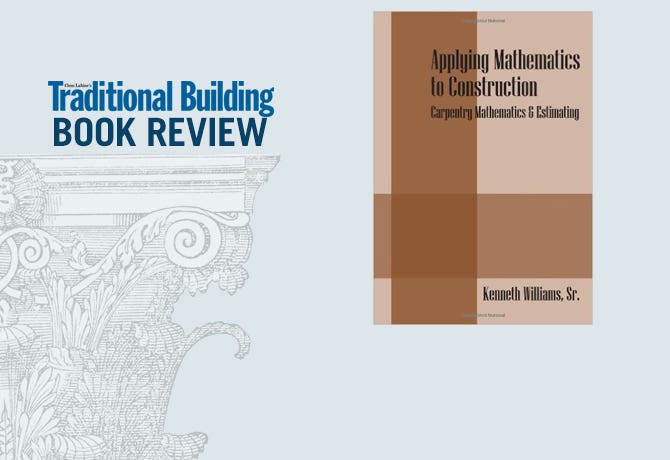
Features
Book Review: Applying Mathematics to Construction
As an Amazon Associate, we earn from qualifying purchases made through affiliate links.
Applying Mathematics to Construction—Carpentry Mathematics & Estimating
by Kenneth Williams, Sr.
Outskirts Press, Inc., Denver, CO; 2011
64 pp; soft cover; no photos; $42.95
ISBN 978-1-4327-6643-6
During a recent conversation, my friend, who happens to be a carpenter, shared that he wished he had paid more attention to math in school. He went on to say that he understands the importance of math to his trade today but continues to worry that young people considering careers in the trades just aren't hearing the message. This conversation would be music to the ears of Kenneth Williams, Sr., who has published Applying Mathematics to Construction—Carpentry Mathematics & Estimating. Williams is an instructor at Delgado Community College, Technical Division in New Orleans, LA.
Williams' book distills years of construction experience as carpenter, contractor and vocational building trades instructor at the post-secondary level. It was during his years as a contractor that he developed a professional philosophy and practice of studying repeated problems to develop strategies and formulas to fix them. His philosophy is, "While making mistakes is common, fixing them is uncommon." His book of formulas and practical processes is his gift to students and fellow faculty to shorten learning curves and avoid common mathematical errors that result in cost increases and lesser profits for those at work in the construction industry.
Williams divides the book into two parts: mathematics and residential estimating. He begins with the tape measure and moves through basic math, fractions, ratios, decimals, percentages, factors, calculating, ovals, octagons, triangles and the Pythagorean Theorem. He then applies this information to the practical aspects of measuring materials, ordering lumber and estimating a job. He strongly encourages trades people to school themselves in math because skillful application of mathematics is professional, workmanlike and honest. He stresses that lack of math skills leads to errors on the job and in ordering materials. Problems such as these diminish respect for the trades when math errors disrupt the delivery, installation and performance of materials. Problems such as these can result in legal confrontations, he warns.
He explains calculations effectively and includes detailed glossaries throughout the book. It is a practical manual for carpenters and other trade professionals to have on their book shelves. It is a great book to give to a young person enrolled in either high school or college carpentry programs or to share with your local building trades instructor. Mathematics instructors would do well to give it a read too, because it may help them engage young people in their classrooms who are interested in construction. It is a good reference book to have in your office if you struggled with math and work in construction trades, the building supply industry or are a design professional.
The book could be improved with some photographs illustrating some of the math applications and I would encourage the author to think about adding some in subsequent printings of the book. I would also encourage Mr. Williams to add more text about the value of these calculations. We bet he has some great stories to share about how he and others learned the importance of some of the mathematical concepts. Having said this, I believe the first edition of this book is valuable to read, share and use and we applaud his efforts to help young people master construction math.TB
Judy L. Hayward is the education director of the Traditional Building Conference Series, and executive director of the Preservation Education Institute, Historic Windsor, Inc., Windsor, VT. She can be reached at jhayward@restoremedia.com
Judy L. Hayward spends her days pursuing a passion for historic architecture and the ways in which it can be reused to sustain and grow healthy communities. She develops courses in partnership with builders, architects, traditional craftspeople and others to teach both historic preservation and traditional building skills. She has one foot in the nonprofit world as executive director of Historic Windsor and the Preservation Education Institute and the other foot in the world of media and information services as education director for the Traditional Building Conference Series and Online Education Program.








